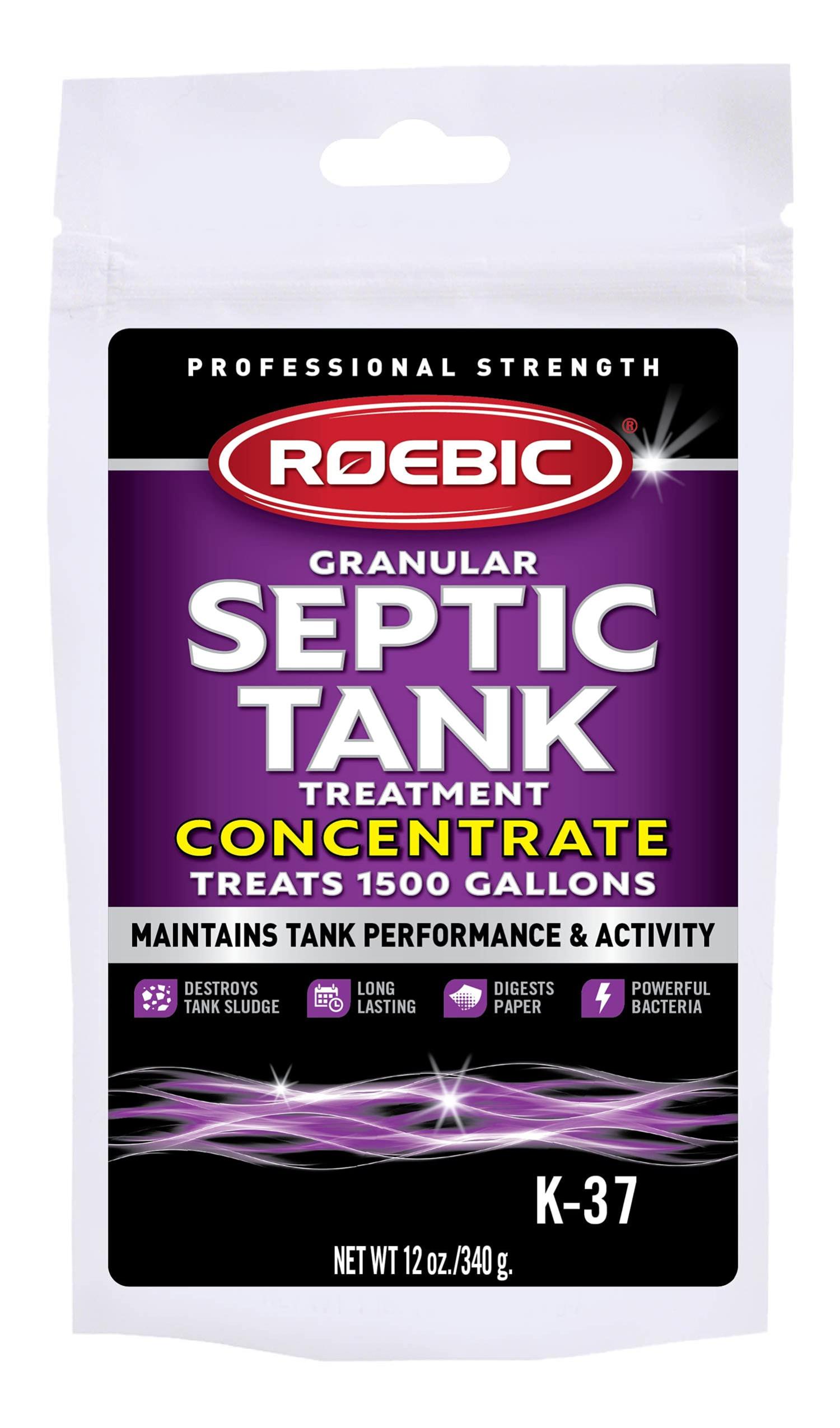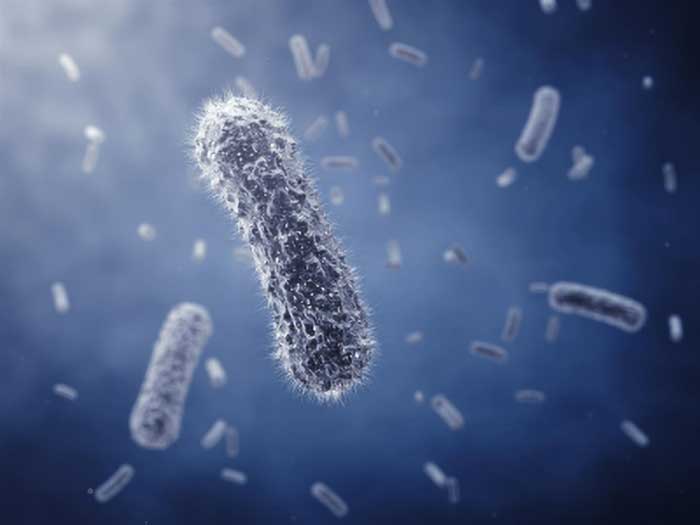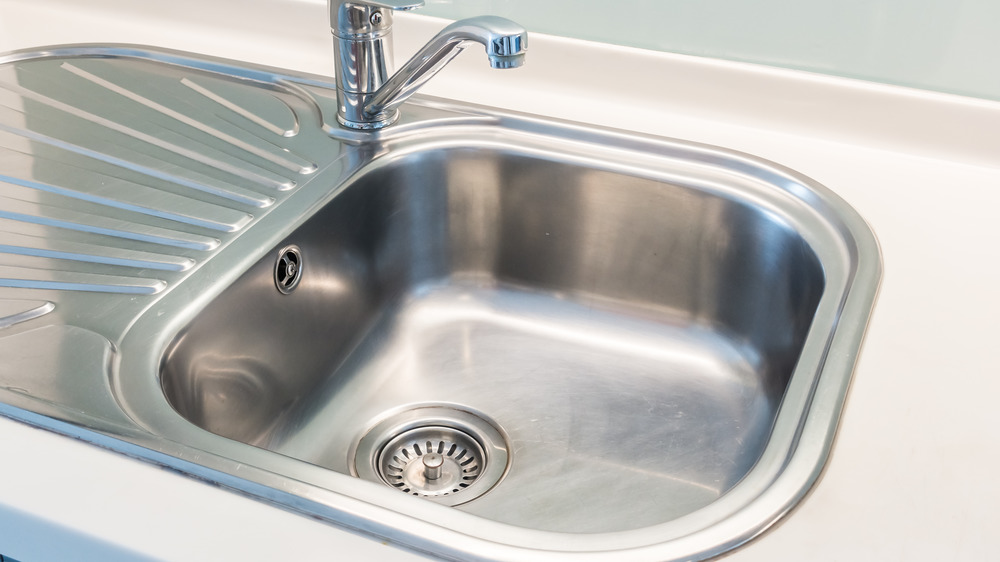When it comes to keeping our homes clean and germ-free, the kitchen sink and toilet are two areas that we often pay special attention to. But have you ever stopped to wonder which one is actually dirtier? Are kitchen sinks really as germ-infested as we think? Let's compare the bacteria levels in kitchen sinks and toilets to find out the truth.1. Bacteria in Kitchen Sinks vs. Toilets
It's no secret that our kitchen sinks are constantly exposed to food particles, dirty dishes, and wet sponges, making it a breeding ground for bacteria. But just how dirty is it compared to our toilets? According to a study by the National Sanitation Foundation (NSF), kitchen sinks actually harbor more bacteria than toilet bowls. This may come as a surprise, but it's important to understand that not all bacteria are harmful.2. The Truth About Kitchen Sink Germs
While it's true that kitchen sinks have a higher concentration of bacteria, it's important to note that the type of bacteria found in toilets are much more harmful. E. coli, for example, is commonly found in toilet bowls and can cause serious illness if ingested. On the other hand, the bacteria found in kitchen sinks are mostly harmless and can even be beneficial to our health.3. Are Kitchen Sinks Really Dirtier Than Toilets?
To get a better understanding of the bacteria levels in kitchen sinks and toilets, let's take a closer look at the NSF study. The study found that kitchen sinks contained an average of 17,964 bacteria per square inch, while toilet bowls contained an average of 2,483 bacteria per square inch. However, the majority of bacteria found in kitchen sinks were non-pathogenic, meaning they do not cause disease. In comparison, the bacteria found in toilets were mostly pathogenic.4. Comparing Bacteria Levels in Kitchen Sinks and Toilets
So, is it safe to say that kitchen sinks are dirtier than toilets? The answer is not as simple as a yes or no. While kitchen sinks may have a higher concentration of bacteria, they are mostly harmless. Toilets, on the other hand, may have a lower concentration of bacteria, but the bacteria found there can pose a greater threat to our health.5. Myth or Fact: Kitchen Sinks are Dirtier Than Toilets
If you're still skeptical about the cleanliness of your kitchen sink, you can conduct your own bacteria test at home. Simply swab both your kitchen sink and toilet bowl and send the samples to a lab for analysis. You may be surprised to find that your kitchen sink contains a higher concentration of bacteria, but remember, not all bacteria are harmful.6. The Surprising Results of a Kitchen Sink vs. Toilet Bacteria Test
Now that we know that kitchen sinks are not as dirty as we may have thought, it's still important to keep them clean and germ-free. Here are some tips to help you maintain a clean kitchen sink:7. How to Keep Your Kitchen Sink Clean and Germ-Free
Aside from the sink and toilet, there are other areas in your kitchen that may harbor more bacteria than you realize. According to the NSF study, the dirtiest spots in the kitchen are the refrigerator handle, stove knobs, and cutting boards. Make sure to regularly clean and disinfect these areas to prevent the spread of harmful bacteria.8. The Dirtiest Spots in Your Kitchen: Sink vs. Toilet
It's important to remember that not all bacteria are harmful. In fact, our bodies are home to billions of bacteria that are essential for our health. The key is to maintain a balance and keep harmful bacteria at bay. By keeping your kitchen sink and toilet clean and practicing good hygiene, you can prevent the spread of harmful bacteria and keep yourself and your family healthy.9. What You Need to Know About Kitchen Sink and Toilet Germs
Now that we know that kitchen sinks are not as dirty as toilets, here are some tips to help you keep it that way:10. Tips for Keeping Your Kitchen Sink Cleaner Than Your Toilet
The Truth About Kitchen Sinks: Are They Really Dirtier Than Toilets?

Exploring the Hygienic Habits of House Design
 When it comes to designing a house, the kitchen sink is often overlooked as a potential source of bacteria and germs. Most people assume that the toilet, with its obvious function, would be the dirtiest area in the house. However, recent studies have shown that
kitchen sinks
may actually
be dirtier than toilets
, causing concern among homeowners and designers alike.
Why is this the case?
To understand the answer, we must first look at the daily habits and functions of these two household fixtures. The toilet is used for one specific purpose and is regularly cleaned with strong disinfectants, making it a relatively clean and hygienic area. On the other hand, the kitchen sink is used for various tasks such as washing dishes, preparing food, and even cleaning hands. This constant use can lead to a buildup of germs and bacteria, especially if proper cleaning and sanitization are not regularly practiced.
Another contributing factor to the
dirty state of kitchen sinks
is the presence of food scraps and residue. When washing dishes or disposing of food, small pieces can easily get stuck in the drain or on the sink surface, creating the perfect breeding ground for bacteria. These hidden areas are often neglected during cleaning, allowing bacteria to thrive and spread.
When it comes to designing a house, the kitchen sink is often overlooked as a potential source of bacteria and germs. Most people assume that the toilet, with its obvious function, would be the dirtiest area in the house. However, recent studies have shown that
kitchen sinks
may actually
be dirtier than toilets
, causing concern among homeowners and designers alike.
Why is this the case?
To understand the answer, we must first look at the daily habits and functions of these two household fixtures. The toilet is used for one specific purpose and is regularly cleaned with strong disinfectants, making it a relatively clean and hygienic area. On the other hand, the kitchen sink is used for various tasks such as washing dishes, preparing food, and even cleaning hands. This constant use can lead to a buildup of germs and bacteria, especially if proper cleaning and sanitization are not regularly practiced.
Another contributing factor to the
dirty state of kitchen sinks
is the presence of food scraps and residue. When washing dishes or disposing of food, small pieces can easily get stuck in the drain or on the sink surface, creating the perfect breeding ground for bacteria. These hidden areas are often neglected during cleaning, allowing bacteria to thrive and spread.
So, what can be done to keep the kitchen sink clean and hygienic?
 The first step is to
clean the sink daily
with hot water and soap. This will help remove any visible food particles and grime. It is also important to regularly
sanitize the sink
with a disinfectant cleaner. Pay attention to hard-to-reach areas such as the drain and faucet handles, as these are often overlooked but can harbor a significant amount of bacteria.
Another essential habit to adopt is
properly disposing of food scraps
. Instead of rinsing them down the sink, scrape them into the trash or compost bin. This will not only keep your sink cleaner but also prevent clogs and foul odors.
Lastly,
designers can play a crucial role
in creating a more hygienic kitchen sink. Consider installing a sink with
antimicrobial properties
or a
touchless faucet
that can reduce the spread of germs. Also, opt for materials that are easy to clean and resistant to bacteria, such as stainless steel or quartz.
In conclusion, while toilets are typically associated with being the dirtiest area in the house,
kitchen sinks can actually be just as dirty if not properly maintained
. By incorporating daily cleaning habits and thoughtful design choices, we can ensure that our kitchen sinks remain a clean and hygienic part of our homes. After all, the kitchen is the heart of the house, and a clean sink is essential for a healthy and happy home.
The first step is to
clean the sink daily
with hot water and soap. This will help remove any visible food particles and grime. It is also important to regularly
sanitize the sink
with a disinfectant cleaner. Pay attention to hard-to-reach areas such as the drain and faucet handles, as these are often overlooked but can harbor a significant amount of bacteria.
Another essential habit to adopt is
properly disposing of food scraps
. Instead of rinsing them down the sink, scrape them into the trash or compost bin. This will not only keep your sink cleaner but also prevent clogs and foul odors.
Lastly,
designers can play a crucial role
in creating a more hygienic kitchen sink. Consider installing a sink with
antimicrobial properties
or a
touchless faucet
that can reduce the spread of germs. Also, opt for materials that are easy to clean and resistant to bacteria, such as stainless steel or quartz.
In conclusion, while toilets are typically associated with being the dirtiest area in the house,
kitchen sinks can actually be just as dirty if not properly maintained
. By incorporating daily cleaning habits and thoughtful design choices, we can ensure that our kitchen sinks remain a clean and hygienic part of our homes. After all, the kitchen is the heart of the house, and a clean sink is essential for a healthy and happy home.













































































































